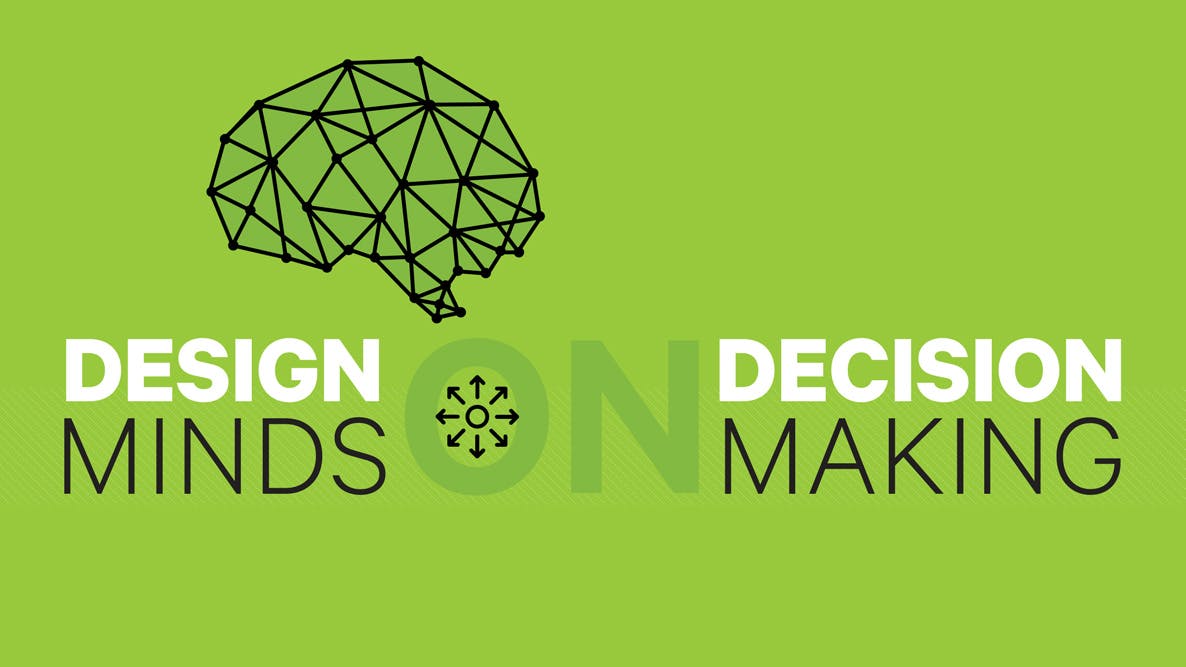Making decisions at SXSW
During our decision-making workshop at SXSW, we ran a little experiment in decision making that yielded some interesting results.
Making decisions at SXSW
Stefanie Norvaisas and I recently returned from an amazing trip to South by Southwest (SXSW) in Austin, where we had the opportunity to host a workshop on Designing Decisions.
As we shared with the workshop attendees, we believe it’s a critical part of all our jobs to facilitate and drive decision making. Yet this simple statement glosses over the fact that the mechanics of decision making are complex and sensitive to emotional and contextual influence. It also ignores the fact that most of us were never given the tools or the understanding needed to design a good decision-making experience.
The work we do as design consultants is marked by urgency, uncertainty and high risk. We are often asking people to make choices based on things for which they have no reference; we are in the business of innovation after all. During our careers, we have become frustrated after working so hard to get to a milestone meeting and then struggling to make a decision. We have shepherded a client through a tough decision, only to have it rejected by the larger organization. We realized we must be “doing it wrong” and turned to the large body of research on decision making. We’ve summarized our learnings and our experience in this workshop to help ourselves and others design a decision-making process to control for biases and a decision-making experience to improve commitment.
In the workshop, we shared what we’ve learned about the cognitive and social biases that can lead us astray and how to work with or navigate around these biases. We also walked the group through a decision-making process and identified critical failure modes to avoid at every step along the way. We finished with a hands-on exercise that involved dividing the group into small teams. Every team worked on the same challenge using the same decision-making steps, but each team had a different decision-making team structure. We defined four types, based on structures we’ve encountered through working with clients:
Consensus Group: All group members contribute to the making of the decision. Every member has a decision-making role.
Justification Group: All group members contribute to the making of the decision. Every member has a decision-making role. In addition, this group had to justify its decision to an outside individual.
Consulting (or Recommending) Group: The group makes decision recommendations to an outside individual. Every member is an advisor only.
Mixed Group: The group has one and only one decision maker. All other group members are advisors to the decision maker. The decision maker has final say in the decision for the group.
Part of our interest in conducting this workshop is to better understand how these different decision-making team structures affect the decision-making experience, and the level of confidence and satisfaction individuals feel regarding the final decision. This wasn’t a true, controlled experiment, but if it were, the decision-making team structures would be our independent variables, and each individual’s reported confidence and satisfaction levels would be our dependent variables. (This was not a controlled experiment! So the results are suggestive or directional at best.)
The $25,000 Challenge (no actual money was at risk)
Imagine that you are part of a small startup. Your company has been given $25,000 and the opportunity to make more money (or lose it) by investing the entire amount in one of the following stocks for the duration of one week: Alphabet (Google) – GOOG, Facebook – FB, or Snap (Snapchat) – SNAP.
You can also decide to not invest in any of these three options, in which case you can keep the $25,000. Again, if you choose to invest, your stock will be cashed out one week from today.
Each group created a team name and made a decision using the process and tools we provided.
Throughout the decision-making exercise, participants were asked to report decisions and confidence levels via an online survey. They made individual, independent decisions first before participating in their groups.
What did each team decide, and how did they do? To see the results, please look at the gallery images at the bottom of the page.
The exercise and the concluding discussion reminded us of some of the decision-making details that are critical to get right, including understanding the business and its appetite for risk, and knowing how to define decision criteria.
Only 23 of the 39 workshop attendees actually followed all of the directions and filled out all of their survey questions. Of those, we saw agreement with results from academic research that shows that people who make decisions as part of a group tend to have more confidence in their decision than people making decisions on their own.* Ten out of the 23 reporting actually changed their minds going from their individual decision to the group decision. Nine out of the 23 increased their reported confidence level in the final decision. No one reported a decrease in confidence level going from individual to group decision.
What did we learn from this?
People don’t always follow directions, so don’t expect them to do so and plan around that reality.
Getting the decision-making criteria right from the outset is important.
The process led to a good decision and the group led to a confident decision.
We had a great time and a fruitful discussion with this group. We always learn something new by discussing the difficulties and the realities of decision making, and we appreciate the workshop attendees for engaging in the conversation with us! We look forward to future conversations on the topic as we work to hone our decision-making skills.
* For example: Sniezek, Janet A. and Rebecca A. Henry. 1989. Accuracy and Confidence in Group Judgment, Organizational Behavior and Human Decision Processes 43(1):1-28.
